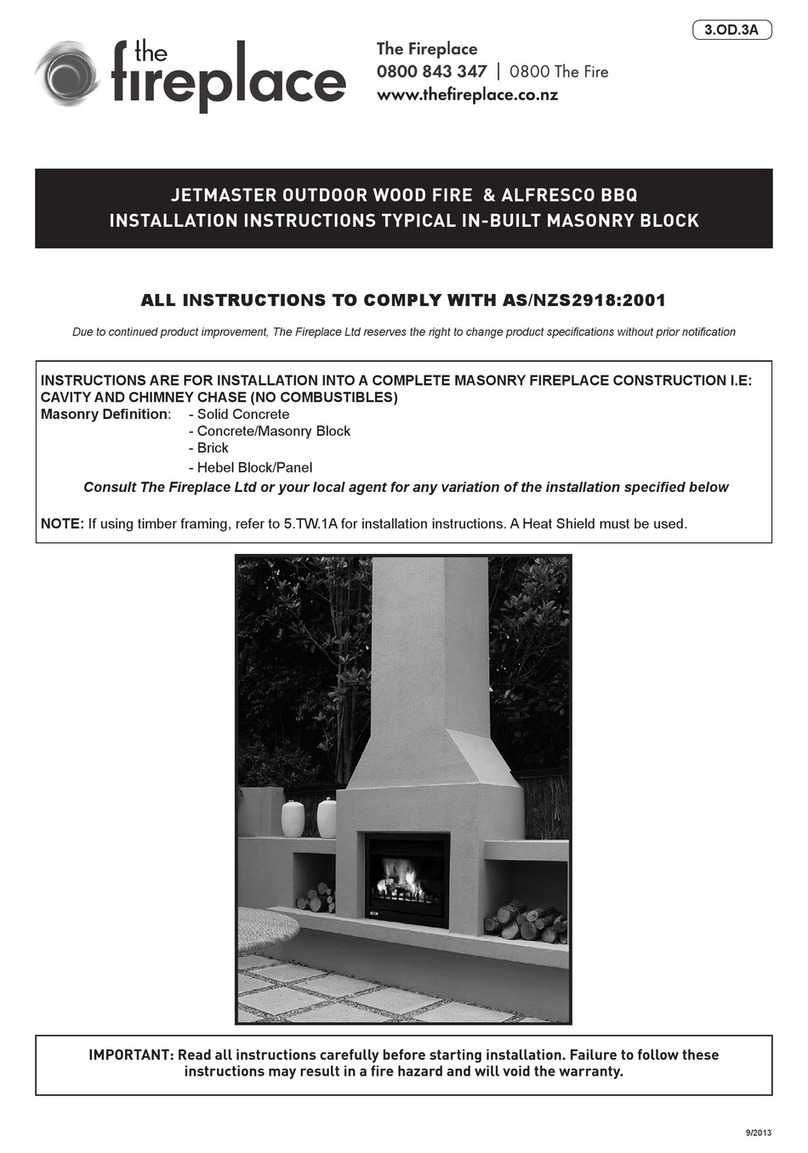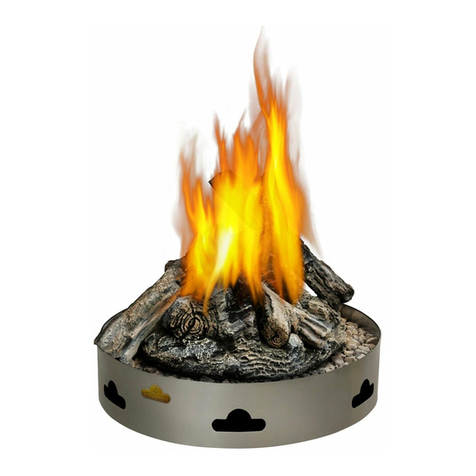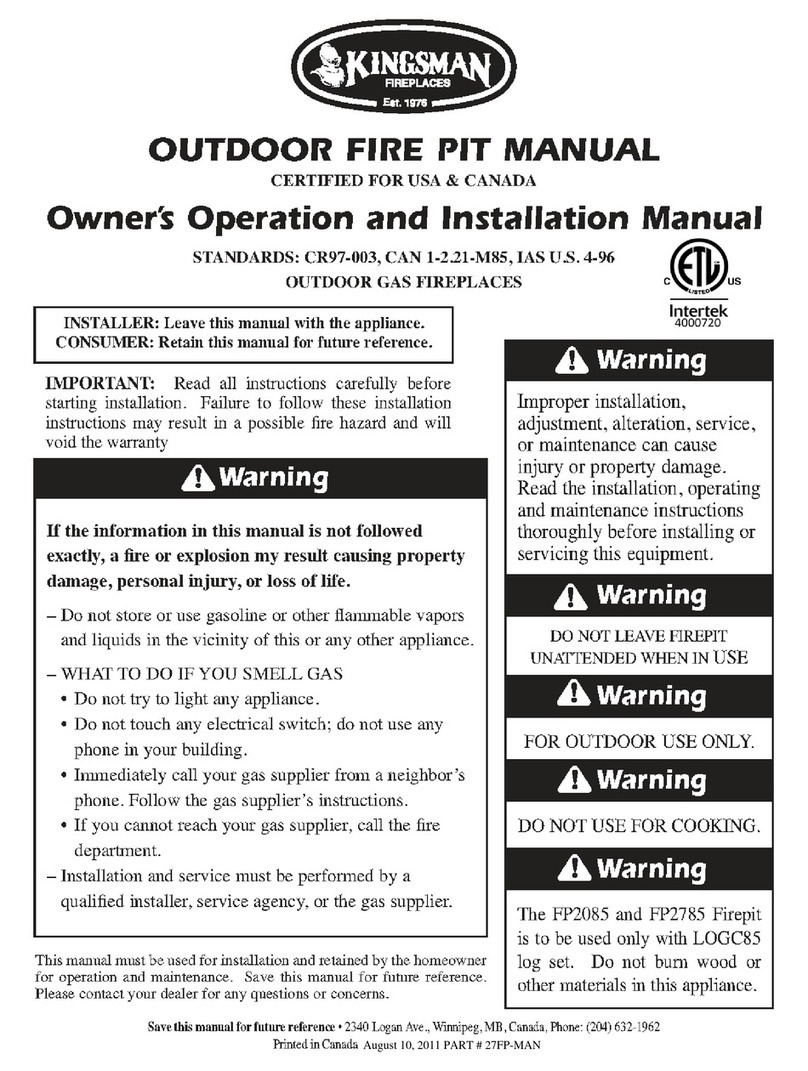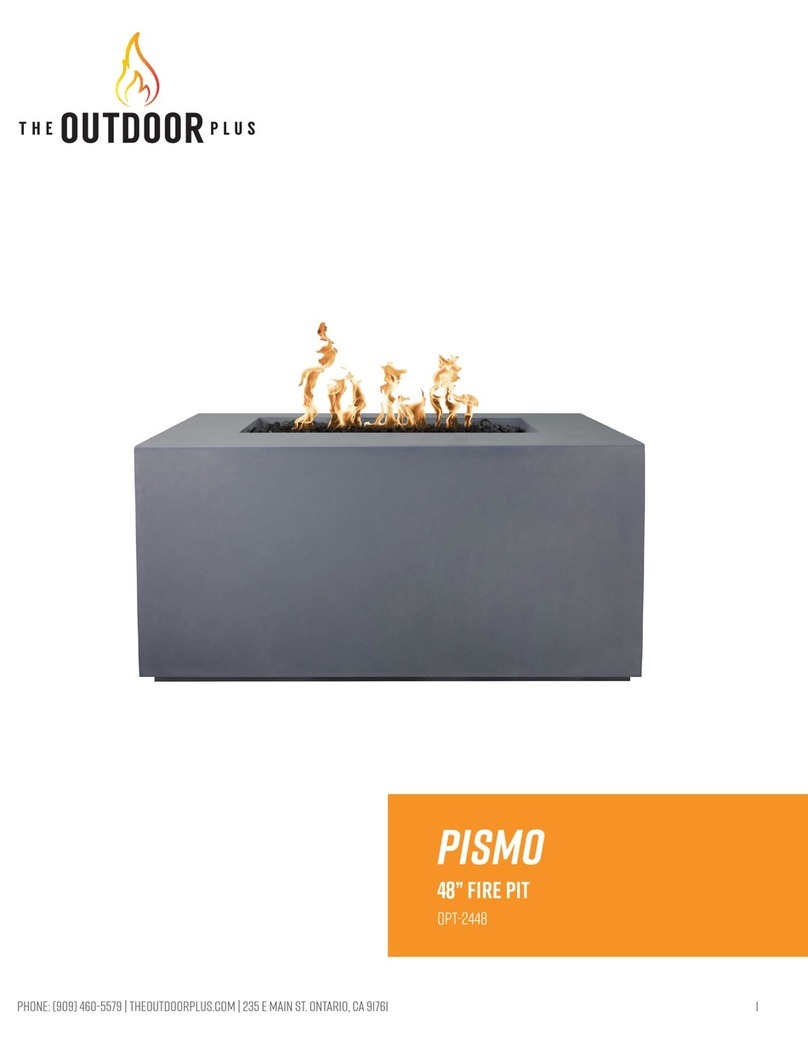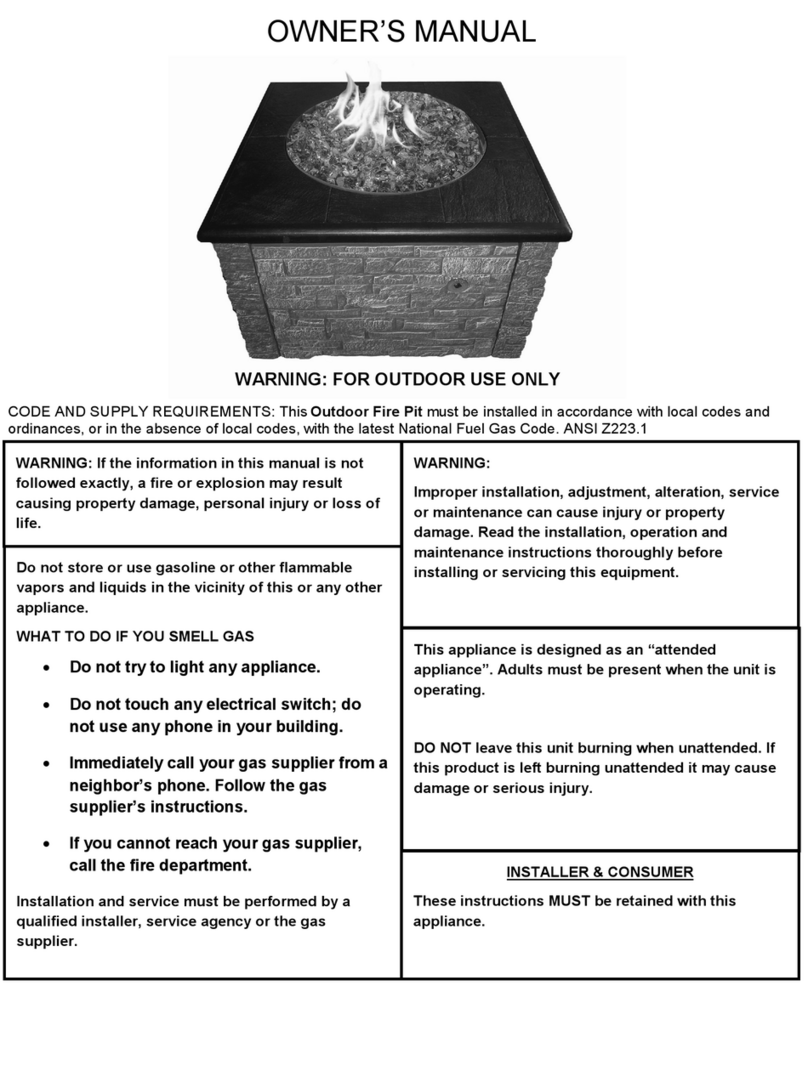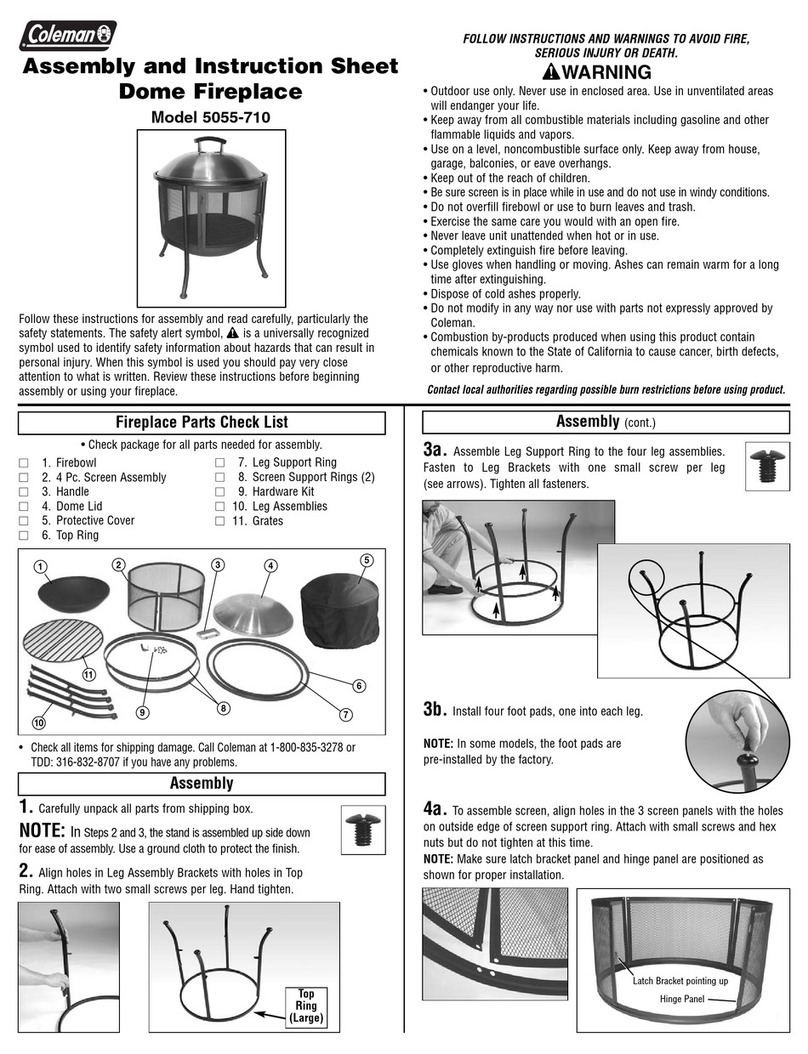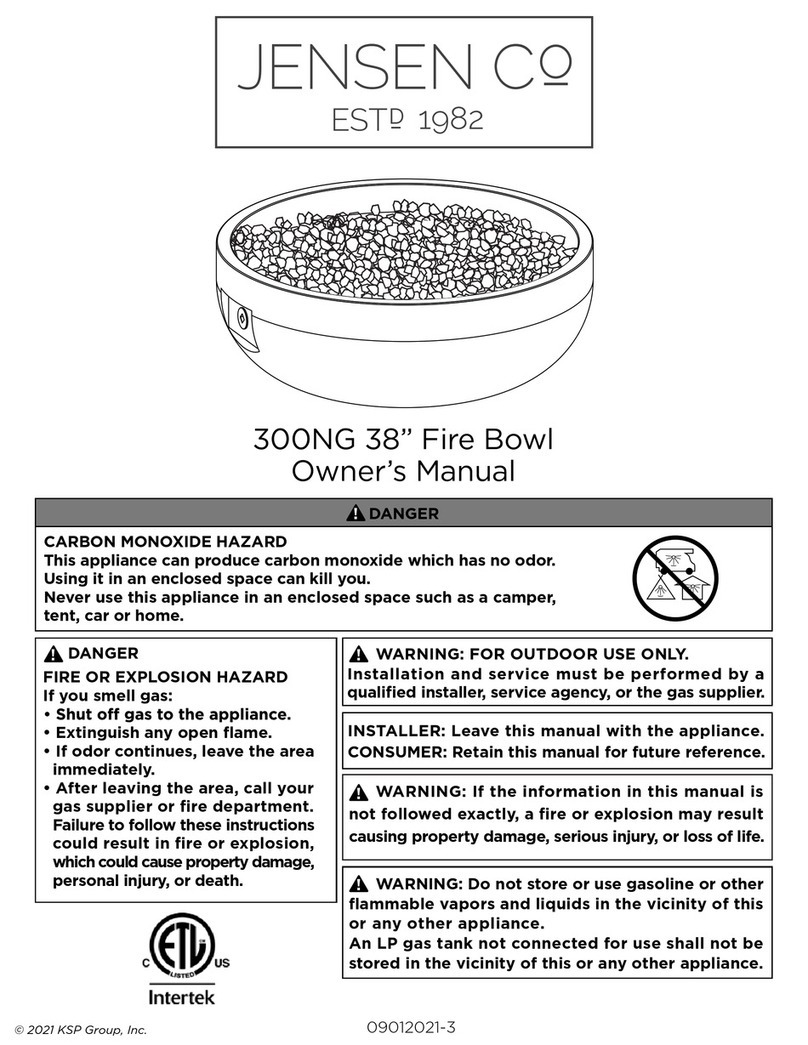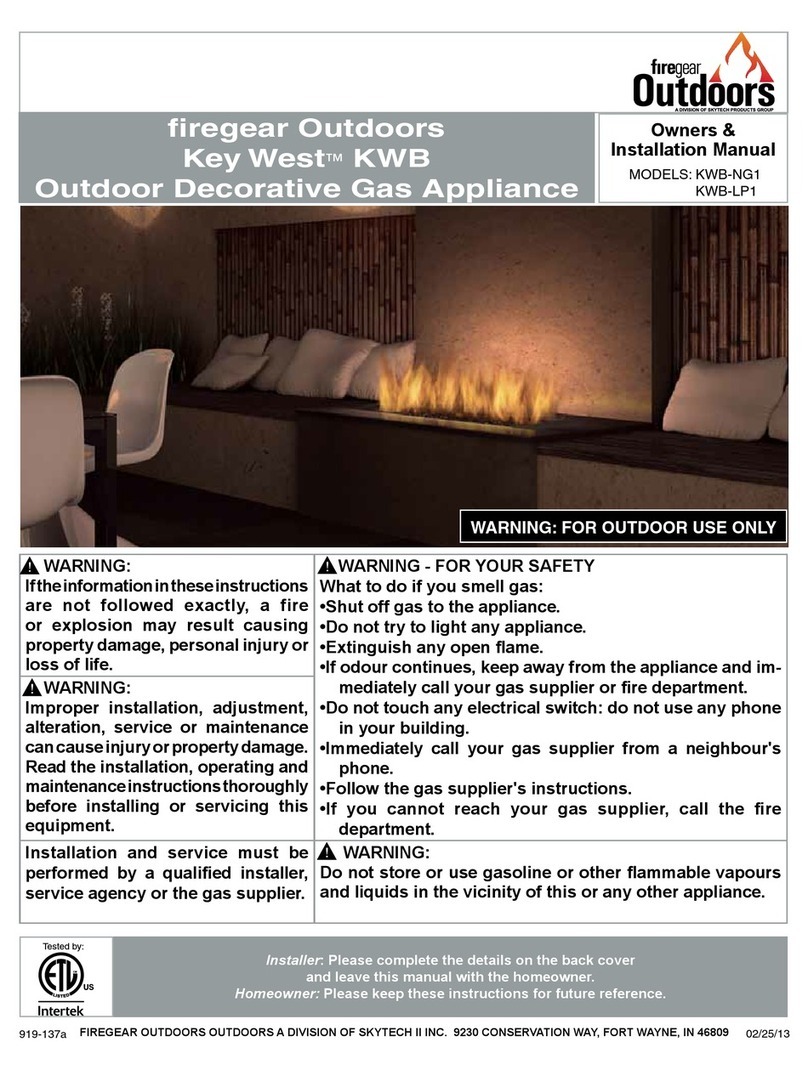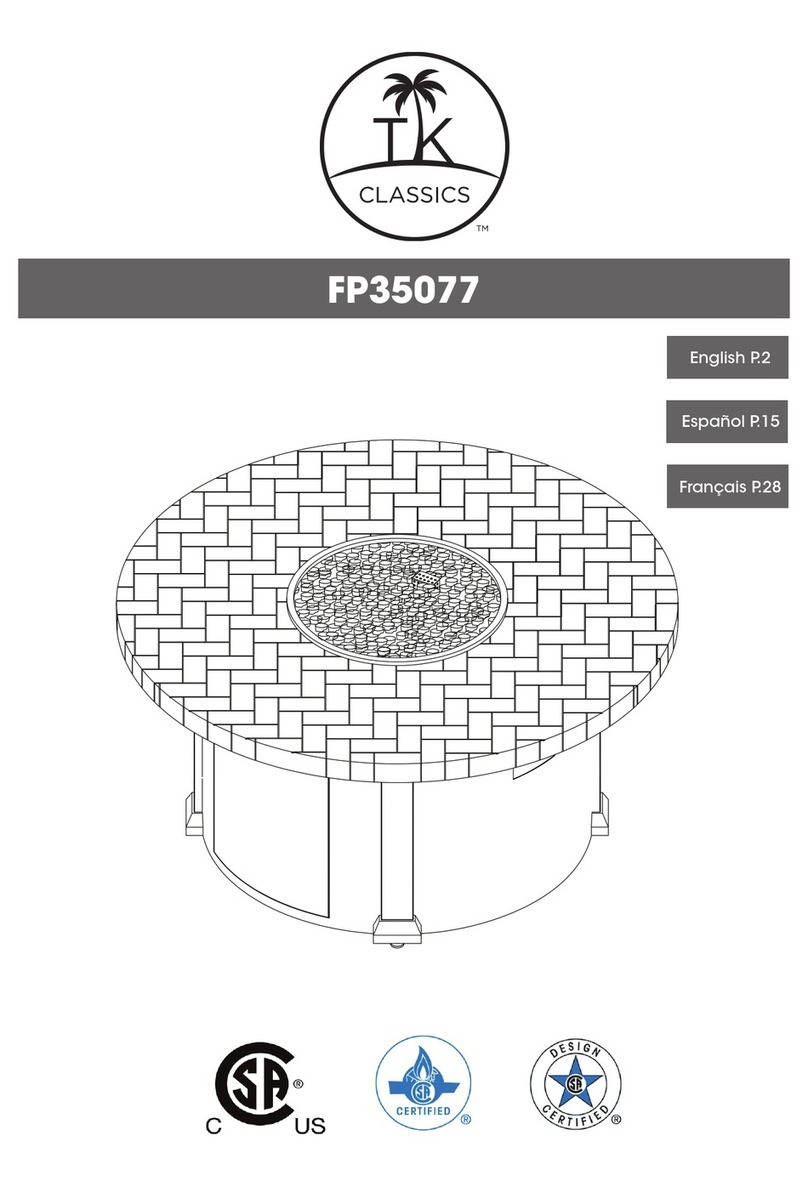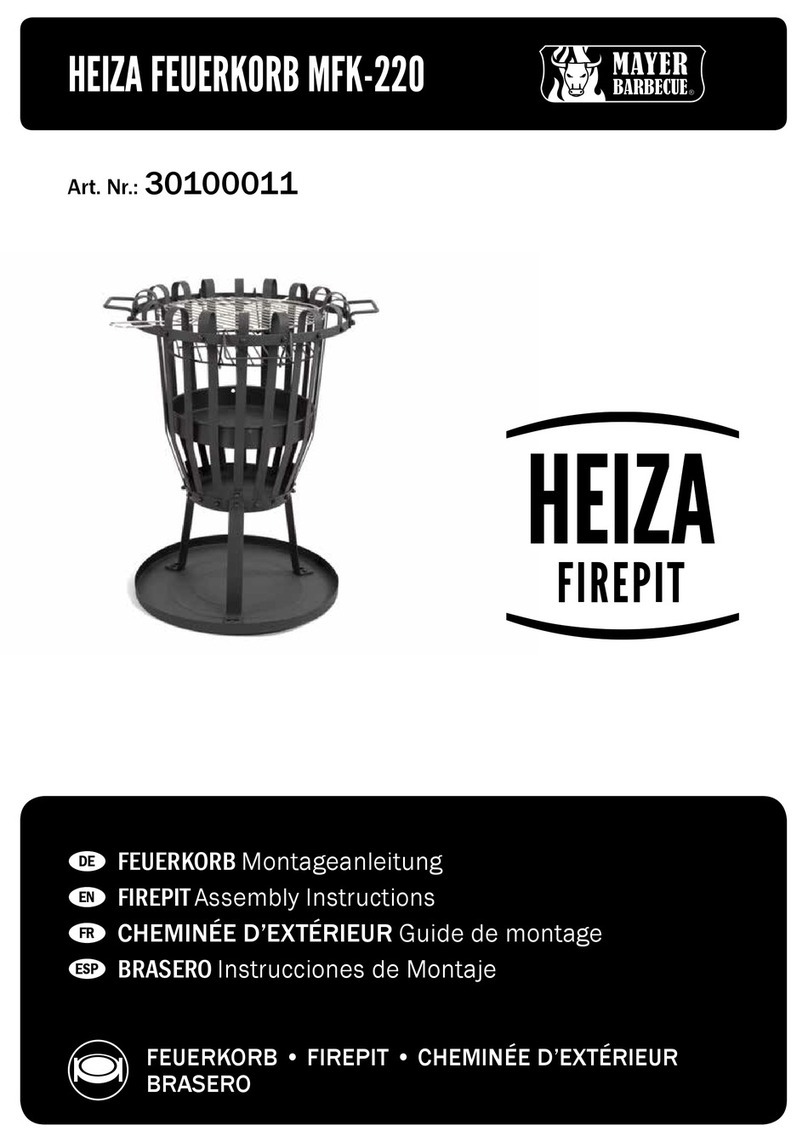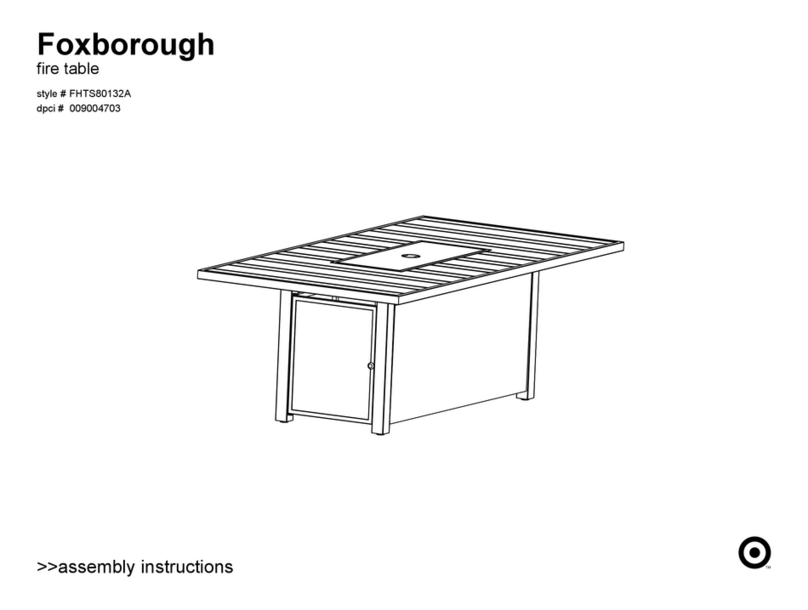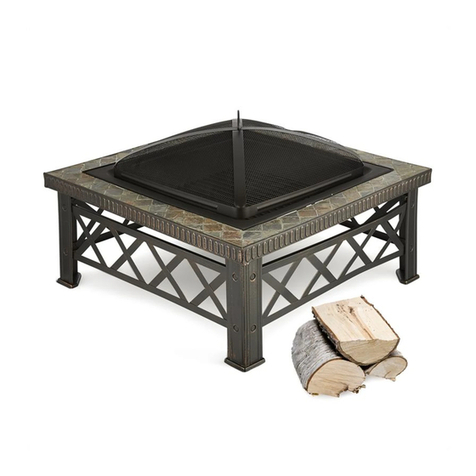realfires.co.nz
Gas Rate Chart
Unflued Model LPG Natural Gas
900 50 MJ/Hr 40 MJ/Hr
There are no electrical options on the Real Fires outdoor fire.
Electrical
The burner is supplied boxed complete with grate, ash cover, vermiculite, logs & coals. To make the gas connec-
tion, place the burner into the firebox so that the back of the burner is touching the firebox and is positioned cen-
tral. The gas pipe should be bent into position and marked for cutting. Remove the burner and cut the pipe then
make a flare connection. Replace the burner & connect the gas pipe. Test for soundness. Fit the front grate onto
the brackets at the front of the burner.
Installation of Real Fires burner into rebox
Position the firebox in front of the masonry cavity. Straighten out the 10mm copper gas pipe from its coil at the
back of the masonry cavity and feed it through the hole in the back of the firebox. At the same time push
the firebox into the cavity. Once the firebox is fitted into the cavity, the firebox can be secured into the cavity by
fixing with screws through the bottom panel. The separate base panel is then placed in the bottom of the firebox.
The burner can then be installed.
Installation of rebox
Fill the burner tray with the vermiculite supplied ensuring the burner tube is completely covered. Lay logs and
coals on the vermiculite as shown in the Log/Coal layout drawing. Note that the shelf at the back of the burner is
also used. Do not place logs and coals close to the pilot. It is important that the coals are not too tightly placed as
this will aect the heat output. The flame picture and radiant glow are better when there is good spacing
between the coals.
Natural Gas burner
A suitable gas supply is required to supply the Mega Joule rating of the fire. The gas supply pipe should be reduced
to 10mm copper at the fireplace location and positioned with approximately 1metre coil of pipe at the rear right
hand side of the cavity when facing the cavity.
Gas supply
